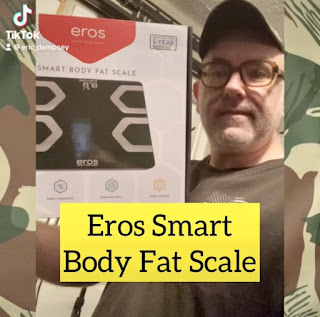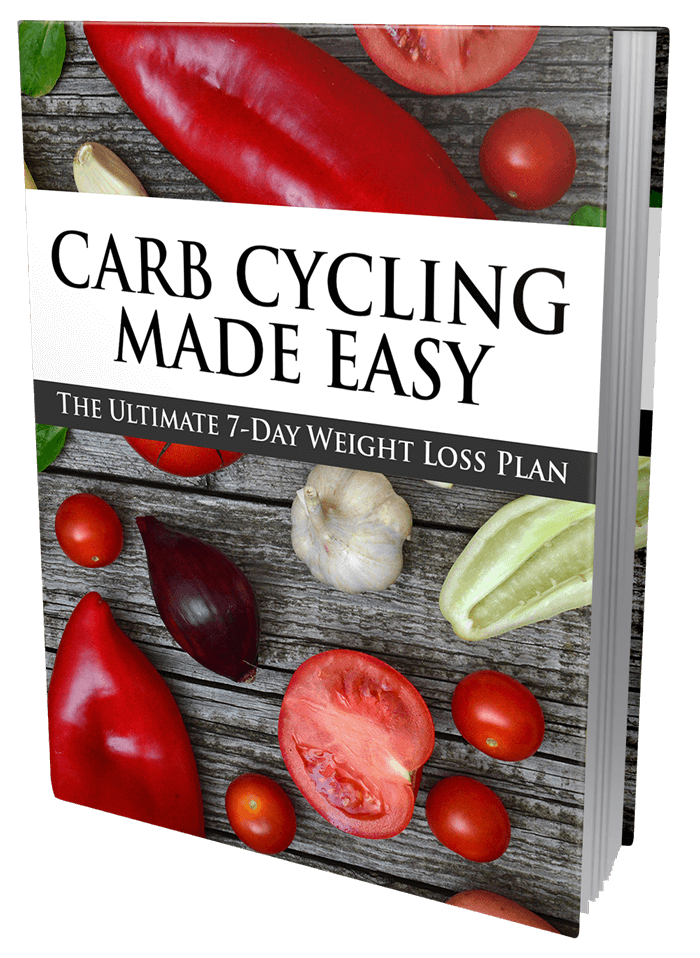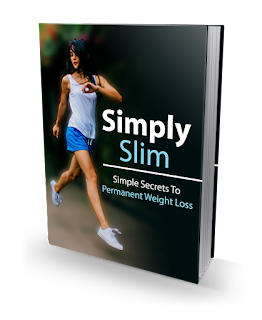Friday, December 29, 2023
Creatine Monohydrate Saved My Gains Over the Holidays
Wednesday, October 11, 2023
Workout Considerations for the Fall and Winter Seasons
Use the link below to get your NAP Heavy Lifting Mouthpiece to reduce pain and increase stabilization and strength during your workouts.
Sunday, July 23, 2023
The Girls Track Their Fat Loss with the Eros Smart Bodyfat Scale
Saturday, July 8, 2023
10 Important Steps for Effective Fat Loss
Today's topic is a common concern for many: fat loss! Losing fat can be challenging, but with the right steps, you can achieve your goals. So, let's dive into the 10 important steps for effective fat loss.
Step 1: Set Clear Goals
Firstly, it is crucial to set clear and realistic goals for yourself. Determine how much fat you want to lose and by when. Remember to make your goals specific, measurable, achievable, relevant, and time-bound.
Step 2: Create a Calorie Deficit
To shed fat effectively, you need to create a calorie deficit. This means consuming fewer calories than you burn in a day. Focus on a well-balanced diet that includes lean proteins, healthy fats, complex carbohydrates, and plenty of fruits and vegetables.
Step 3: Monitor Your Portions
Keep an eye on your portion sizes to avoid overeating. Use smaller plates, measure your food, and be mindful of your eating habits. By controlling your portions, you can manage your calorie intake more effectively.
Step 4: Incorporate Strength Training.
Adding strength training to your routine is a game-changer. It boosts your metabolism, builds lean muscle mass, and helps you burn more calories even at rest. Aim for resistance exercises two to three times a week.
Step 5: Engage in Cardiovascular Exercise
Cardiovascular exercises such as running, cycling, or swimming are excellent fat burners. Aim for at least 150 minutes of moderate-intensity cardio per week to enhance your weight loss journey.
Step 6: Prioritize Sleep and Stress Management
Pay attention to your sleep and stress levels. Lack of sleep and chronic stress can hinder fat loss. Aim for 7-9 hours of quality sleep per night and engage in stress-reducing activities like meditation or yoga.
Step 7: Stay Hydrated
Drinking enough water is often overlooked but vital for fat loss. Water helps to flush out toxins, aids digestion, and boosts your metabolism. Aim for at least 8-10 glasses of water per day.
Step 8: Limit Processed Foods and Sugars
Processed foods and added sugars can easily derail your fat loss progress. Opt for whole, unprocessed foods rich in nutrients instead. Focus on lean proteins, whole grains, fruits, and vegetables.
Step 9: Track Your Progress
Regularly track your progress to stay motivated. Take measurements, use a scale, or take progress pictures. This way, you can celebrate milestones and make necessary adjustments to your routine.
Step 10: Stay Consistent & Seek Support
Lastly, remember that consistency is key. Stick to your fat loss plan even when it gets tough. Surround yourself with supportive friends or join a community of like-minded individuals to stay motivated and accountable.
And that wraps up our 10 important steps for fat loss. Remember, it's about finding a sustainable lifestyle that works for you. Stay focused, stay positive, and soon you'll be on your way to achieving your fat loss goals. Stay healthy!
If you really want to get a jump start on achieving your goals, tracking your data is essential. My recommended tracking tool is the Eros Smart Body Fat Scale.
This amazing smart scale tracks 13 data metrics and comes with a free mobile app. I use it weekly for myself and my clients.
Inevifit Eros Smart Body Fat Scale
Use coupon code ERIC to receive 20% off of your order through my link below:
http://www.inevifit.com?aff=266
Friday, June 16, 2023
What is Basal Metabolic Rate (BMR) and Why Is It Important?
BMR is the energy expenditure required to keep your body functioning at rest, without any physical activity or digestion taking place. It is influenced by several factors, including age, sex, body composition, and genetics.
Factors that can affect BMR include:
Age: BMR tends to decrease with age due to a loss of muscle mass and a decrease in metabolic activity.
Sex: Men generally have a higher BMR compared to women because they tend to have more muscle mass.
Body composition: Muscle tissue is more metabolically active than fat tissue, so individuals with a higher proportion of muscle tend to have a higher BMR.
Genetics: Some individuals may have a naturally higher or lower BMR due to genetic factors.
Thyroid function: The thyroid hormone plays a significant role in regulating metabolism. Hypothyroidism (underactive thyroid) can lower BMR, while hyperthyroidism (overactive thyroid) can increase it.
To determine an individual's BMR, various equations have been developed, such as the Harris-Benedict equation and the Mifflin-St. Jeor equation. These equations take into account factors like age, sex, weight, and height to estimate an individual's BMR.
BMR is just an estimation of the energy requirements at rest and does not account for physical activity or digestion. To determine your total daily energy expenditure, you would need to consider your BMR along with the calories burned through physical activity and the thermic effect of food.
Wednesday, April 26, 2023
What is Functional Fitness?
Saturday, April 15, 2023
Adapting as We Age in Fitness
Wednesday, March 8, 2023
Carb Cycling for Weight Loss Program with Bonus Gifts now available
This diet blueprint reveals everything you need to know about Carb Cycling: How to get started with carb cycling, core benefits & implementation strategies, carb cycling protocols to follow, sample 7 day carb cycling meal plan and all the tips & tricks to get the best results out of this diet!
Wednesday, February 22, 2023
Salt is Salt Right? Table Salt VS Celtic Sea Salt
During a conversation with a medical doctor, he said that salt is salt, and it doesn't matter what type you use. While in a very narrow spectrum that statement is true in regards to sodium chloride, there are many differences between different types of salt.
The differences are mainly in the type of refining, manufacturing and processing. Lets take a look at common table salt compared to Celtic sea salt.
Table salt and Celtic sea salt are both made from the same basic ingredients: sodium chloride and trace minerals. But there are a few key differences between the two that make one more beneficial than the other.
Celtic sea salt, on the other hand, comes from evaporated seawater that's been naturally filtered through layers of sand, gravel, clay and granite over thousands of years. Meaning that it contains only natural ingredients with no additives or chemicals. Its coarse texture also means that it dissolves quicker than table salt in liquids like soups and stews, which helps your body absorb more nutrients from food.
It is unrefined, and therefore not iodized or refined. It is harvested from seawater in France, where the water contains over 80 different trace minerals. These include calcium, magnesium, potassium and iron, all of which are essential for our bodies. It also contains lower amounts of iodine, which supports healthy thyroid function and helps prevent goiter (an enlarged thyroid gland). While the amount of iodine in Celtic sea salt is reportedly lower than processed table salt, it is an all-natural, pure source of iodine that is quickly absorbed and stored by your body.
Tuesday, February 21, 2023
Meal Idea and Some Weight Loss Advice
Wednesday, February 8, 2023
Make Time for Your Health or You Will Spend Time in the Hospital
Friday, January 20, 2023
Kettlebells: A Timeless Strength and Conditioning Tool
Sunday, January 15, 2023
Review of the SMART Acronym for Goal Setting
Learn the proven principles of long term weight loss and healthy eating.
Thursday, January 12, 2023
Nutrition Guidelines for Older Adults
The dietary guidelines for older adults recommend that they consume a variety of foods, including fruits, vegetables, whole grains, fat-free or low-fat milk and milk products, beans and peas, lean meats and poultry, fish, eggs, and nuts.
- Choose foods and beverages that limit calories from added sugars, solid fats and alcohol.
- Eat a variety of nutrient-dense foods to meet your nutritional needs.
- Choose a diet with plenty of vegetables, fruits, whole grains, fat-free or low-fat dairy products, lean meat and poultry and fish.
- Limit sodium (salt) intake to less than 2,300 mg/day.
Older adults need to consume a diet that is high in fiber, low in saturated fat, and rich in vitamins and minerals. The following are some key points to consider when planning a diet for older adults:
- Older adults should consume at least 30 grams of fiber each day.
- A diet that includes lots of fruits and vegetables will help older adults meet their daily vitamin and mineral requirements.
Nutrition is an important factor for older adults. The key to healthy eating is to make informed decisions about what you eat and drink, as well as how much.
You can also help your body by making sure you get all the vitamins and minerals you need, while avoiding those that can be harmful.
Here are some tips on how to choose the right foods for older adults:
1) Eat a variety of foods in order to get all the nutrients you need.
2) Choose whole grains instead of processed ones.
3) Eat plenty of fruits, vegetables, legumes and nuts to get enough fiber and protein.
4) Choose low-fat dairy products instead of full-fat ones (milk, yogurt, cheese etc.).
5) Include fish in your diet at least twice a week; it's an excellent source of omega-3 fatty acids which may help reduce inflammation throughout the body (including in joints).
Older adults are at risk for a number of nutrition-related problems, including malnutrition, dehydration and vitamin deficiencies.
The most common problem is unintentional weight loss because of poor appetite, trouble swallowing or chewing, or other physical limitations. Older adults may also have trouble consuming enough calories to maintain their weight.
Some older adults may not be able to tell when they're hungry or thirsty, so it's important for caregivers to help them eat regularly and drink plenty of fluids.
Older adults who have trouble swallowing may need to have thickened liquids or food pureed into a liquid consistency. It's also important that they stay hydrated by drinking water throughout the day instead of waiting until they feel thirsty.
Protein intake requirements for older adults
As we age, our bodies are less able to produce certain proteins. The result is that we need more protein in our diets than when we were younger.
Older adults should consume 1.2 to 1.5 grams of protein per kilogram of body weight. The daily recommended intake is 0.8 g/kg for healthy adults, but this rises to at least 1 g/kg for older adults who are at risk of sarcopenia, which is the gradual loss of muscle mass and strength that occurs as we age.
Healthy fat intake requirements for older adults
Getting enough fat in your diet is important for older adults.
Older adults need to eat more than younger adults, and it's especially important that they get enough fat in their diets.
The recommended daily allowance of fat for an older adult is 20-35% of total calories, depending on age. The amount of fat in your diet should be limited to less than 10% saturated fats and less than 300 mg cholesterol per day.
This means that if your total daily calories are 2000, you should aim to take in between 500 and 700 grams of fat per day.
Fat helps you feel full and satisfied, so you'll be less likely to overeat. It also helps your body absorb essential vitamins A, D, E and K, as well as minerals such as copper and iron.
Fatty foods can also help protect against osteoporosis by keeping bones strong and healthy.
Older adults need to eat more healthy fats like avocado, nuts, fish and olive oil. These fats are good for the heart, brain and weight management.
Recent studies show that a high-fat diet is linked to lower mortality rates in people over 65 years old. This could be because high-fat foods are more satiating than low-fat foods, which means they leave you feeling fuller longer and help keep blood sugar levels stable.
In addition, the fat in certain foods can help your body absorb their nutrients better. For example, if you're eating spinach or another green vegetable that contains iron, it may not have much effect on your health if you don't eat any fat with it.
But if you add some olive oil or nuts to the mix, then your body will absorb more of the iron from the spinach—and that could help prevent anemia!
Carbohydrate intake requirements for older adults
Carbohydrates are the body's main source of energy and their levels in the blood stream can affect brain function, digestion, and bone mass.
It is the body's main source of fuel and provide energy for basic functions like breathing, pumping blood, and digesting food. Carbohydrates are also important for healthy brain function.
Carbohydrates are found in many foods, including grains, fruits, vegetables and milk products. The amount of carbohydrate you need depends on your age, gender and activity level.
Carbohydrate intake should be between 45% and 65% of your daily caloric intake.
As we age, we need the right amount of carbohydrates in our diets. This is because our bodies lose the ability to produce the hormone insulin as we age, which can lead to health problems like diabetes.
If you're over 65 years old, your body may be less efficient at using carbohydrates for energy. This means that eating too many carbs might cause blood sugar levels to rise quickly and then fall quickly, which can lead to fatigue, headaches and irritability.
It's important to talk with your doctor or dietitian if you have concerns about how much carbohydrate you should be eating each day. As long as you keep track of what kinds of food sources contain carbohydrates (including vegetables and fruit), it's easy to meet your needs while still enjoying a balanced diet.
Calorie Requirements for Older Adults
























